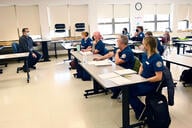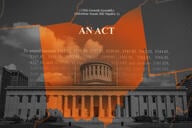You have /5 articles left.
Sign up for a free account or log in.
Some community college students have struggled with access to food -- a previously documented trend that has now been quantified on a national scale in a new report released Tuesday.
The issue of food insecurity -- defined as reduced quality of diet and access to nutrition -- has slowly surfaced as a more prominent national health concern and prompted some legislative debate, both in the states and federally. This is the first study that attempts to capture the national scope of the problem on college campuses. The new study finds that 13 percent of students at community colleges experienced food insecurity in 2015. That figure is far below the estimate in a much-discussed study released in March, but researchers say that the 13 percent figure should be cause for alarm.
The Urban Institute, a left-leaning think tank, relied on a data from a national survey conducted monthly by the U.S. Census Bureau and the U.S. Bureau of Labor Statistics. The Current Population Survey allowed researchers to consider those households with college students.
The Urban Institute collaborated with two professors and the Brookings Institution to try to determine the pervasiveness of food insecurity. The researchers found that the situation was even worse during the economic downturn that started in 2008. From that year through 2014, an average of roughly 21 percent of those households with community colleges indicated that they couldn’t access proper food all the time.
“The economy was in a really bad place for a long time there,” said Diane Schanzenbach, one of the researchers and a senior fellow at Brookings. “Unfortunately, you’ve got so many people locked into expenses. You have to pay a certain amount on rent -- you can’t cut back on rent -- so one of the only things you’ve got that is flexible is food, and that’s not a great place to cut back.”
Schanzenbach urged a national conversation on the obstacles that food-insecure community college students must overcome simply to learn the skills necessary to enter the job market -- some students balance child care and full-time work, and finding lunch shouldn’t be an additional barrier, she said.
As also noted in the report, remedies for this problem must be targeted and retooled depending on the institution, whether it’s located somewhere rural or urban, Schanzenbach said.
Various congressional committees handle different aspects of these problems, and so forming a commission specific to food insecurity would perhaps be beneficial, she said.
One option would be to re-evaluate government assistance for food -- the Supplemental Nutrition Assistance Program, known now as SNAP, previously the Food Stamp Program -- which is only available to college students who work 20 hours a week or participate in Federal Work-Study, Schanzenbach said.
The study suggests lowering the minimum number of hours required to work to be eligible for benefits -- a potentially crucial change for community college students, many of whom are enrolled part-time.
Other researchers said they believe the study understates the problem.
Students are much more mobile than in previous generations, said Sara Goldrick-Rab, a professor of higher education policy and sociology at Temple University and the founder of the Wisconsin HOPE Lab. Some may be homeless, and others can’t be tied to a household for some other reason. As a result, the Urban Institute's approach wouldn't capture these students.
Goldrick-Rab helped conduct the March study of food insecurity that involved individual surveys of community college populations. It generated buzz but did not capture a nationally representative sample of students. That study included 33,000 students at 70 community colleges across 24 states, and it showed about two-thirds of them struggle with food insecurity. This was a fraction of those who were offered the survey, a total of 750,000 students. (Note: While the March study found that 67 percent of respondents were food insecure, 56 percent is a better comparison figure to the Urban Institute study. That's because the 67 percent finding included students who reported "marginal" food security, a category the new study did not include in its overall figure for food-insecure students.)
“If it were possible to use this type of national data, we would have,” Goldrick-Rab said, adding that while she was thrilled additional research was being done, it should not trump existing studies.
Kristin Blagg, a research associate with the Urban Institute, called Goldrick-Rab’s concerns “valid.”
“I agree that we need better, nationally representative data on this issue,” she said via email.
In part, the study also tried to identify which students grapple with this issue the most, said Blagg. Black students attending two-year institutions and those who were unemployed suffered the highest rates of food insecurity. Blagg said this study can be built upon with additional research.
Estimates from the new report are likely conservative, said Katharine Broton, an incoming assistant professor of higher education at the University of Iowa, also an affiliate of the Wisconsin HOPE Lab.
She said though leaders in higher education recognize the challenges concerning food and nutrition on their campuses, lawmakers do not always -- she said she’s pleased that it’s receiving more widespread attention. Broton mentioned a proposal by the Wisconsin HOPE Lab to expand to higher education the federal National School Lunch Program, which provides free or reduced-price meals to students in K-12 schools.
Wick Sloane, an Inside Higher Ed columnist who also teaches at Bunker Hill Community College, said in an interview he appreciates these sorts of studies because they reflect the problems he and his colleagues see on college campuses.
“To us, this is a big deal -- a national study,” Sloane said.




